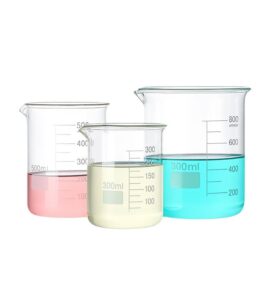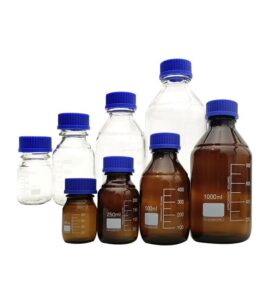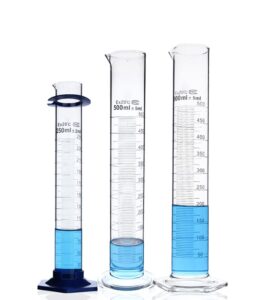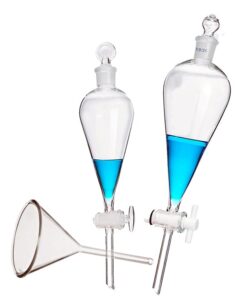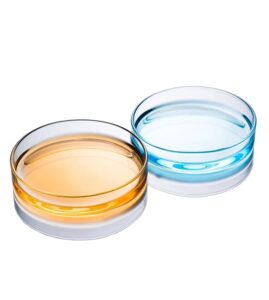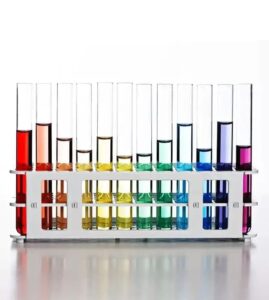Have you ever found yourself staring at a pile of brand new lab glassware, wondering about the most efficient way to rid it of contaminants before its first use? Does the thought of potential residues affecting your sensitive experiments keep you up at night? You’re not alone. The quest for the perfect cleaning method is a common dilemma for scientists and lab technicians alike.
Choosing the right cleaning method for your new lab glassware is crucial for ensuring accurate and reliable results in your experiments. There are several approaches, each with its advantages and challenges. Whether it’s mechanical cleaning, chemical detergents, or specialized techniques, selecting the most suitable method can significantly impact the success of your work.
Let’s embark on a journey to uncover the secrets behind effective lab glassware cleaning, keeping your experiments pristine and your data accurate.
Why Clean New Lab Glassware?
New lab glassware can be contaminated with lubricants, oils from handling, and chemicals from the manufacturing process. These contaminants can interfere with chemical reactions, adhere to sample components, or cause erroneous results in sensitive analyses. Therefore, thorough cleaning is essential to remove these substances and prepare the glassware for its first use in experiments.
What Are the Main Methods for Cleaning Lab Glassware?
Cleaning lab glassware is not just about aesthetics; it’s about maintaining the integrity of your research. The main methods include mechanical washing, chemical cleaning, acid washing, and dry heat sterilization. Each method has its specific use case, depending on the type of residue, the glassware’s purpose, and the available resources.
Mechanical Washing
Mechanical washing involves physical scrubbing using brushes and appropriate detergents. It’s the most straightforward method, often effective for removing general lab residues. However, it requires manual effort and might not be suitable for delicate glassware or hard-to-remove contaminants.
Chemical Cleaning
Chemical cleaning uses detergents or solvents specifically designed for lab use, capable of dissolving organic and inorganic materials. This method can be highly effective but requires knowledge of the chemicals used and their compatibility with different types of glassware.
Acid Washing
Acid washing is a more aggressive approach, typically used for glassware that has been exposed to stubborn residues or needs to be ultra-clean. Common acids include hydrochloric acid and nitric acid. This method must be handled with care, considering the potential hazards of working with strong acids.
Dry Heat Sterilization
Dry heat sterilization involves using high temperatures to remove organic residues and sterilize the glassware. This method is excellent for glassware that can withstand high temperatures but might not be suitable for all types of contaminants.
Cleaning Methods for New Lab Glassware
Several methods are available for cleaning lab glassware, each with its specific applications, advantages, and considerations. Let’s explore the most common techniques:
1. Detergent Washing
Method: Soaking and scrubbing with laboratory-grade detergents, followed by thorough rinsing with distilled water.
Pros: Effective for general contaminants; gentle on glassware. Cons: May not remove all types of residues; requires significant rinsing to avoid detergent residue.
2. Acid Cleaning
Method: Soaking in a dilute acid solution, such as hydrochloric acid or nitric acid, to remove inorganic deposits.
Pros: Highly effective for removing mineral deposits and scale. Cons: Can be hazardous; requires careful handling and neutralization.
3. Solvent Washing
Method: Using organic solvents to remove organic residues from the glassware.
Pros: Effective for dissolving and removing organic contaminants. Cons: Solvents can be flammable and toxic; requires proper ventilation.
4. Dry Heat Sterilization
Method: Exposing glassware to high temperatures to remove organic residues and sterilize.
Pros: Also achieves sterilization; effective for organic residue removal. Cons: Only suitable for heat-resistant glassware; may not remove all types of contaminants.
Cleaning Methods for Different Lab Glassware Types
In the realm of scientific research, the precision and accuracy of experiments are paramount. A critical aspect of ensuring this precision lies in the proper cleaning of lab glassware. Different types of glassware may require specific cleaning techniques based on their use and the nature of the materials they come into contact with. The table below outlines the recommended cleaning methods for various types of lab glassware, detailing the conditions, tools required, and important precautions to take during the cleaning process.
| Type of Glassware | Recommended Cleaning Method | Conditions | Tools Needed | Precautions |
|---|---|---|---|---|
| Beakers and Flasks | Detergent Washing | Room temperature, soak for 30 minutes | Brushes, detergent, distilled water | Avoid abrasive brushes that can scratch glass |
| Pipettes and Burettes | Solvent Washing followed by Detergent Washing | Use solvents at room temperature, then soak in detergent solution for 30 minutes | Pipette brushes, solvents, detergent, distilled water | Ensure thorough rinsing to remove all solvent and detergent residues |
| Petri Dishes | Detergent Washing followed by Dry Heat Sterilization | Wash at room temperature, sterilize at 160°C for 2 hours | Soft sponge, detergent, oven for sterilization | Handle with care to prevent breakage |
| Volumetric Flasks | Acid Washing | Soak in dilute acid solution for 1 hour | Protective gloves, acid solution (e.g., HCl), distilled water | Use glassware-specific acid; ensure thorough neutralization and rinsing |
| Test Tubes | Detergent Washing followed by Alcohol Rinse | Room temperature, soak in detergent solution, then rinse with alcohol | Test tube brushes, detergent, alcohol, distilled water | Alcohol rinse helps remove detergent residue and speed up drying |
Table Notes:
- The cleaning methods provided are general recommendations. Always consult with your lab’s safety and protocol guidelines before using any chemicals or detergents.
- When handling chemicals, especially solvents and acids, wear appropriate PPE to protect against exposure.
- Ensure that all glassware is rinsed thoroughly with distilled or deionized water after cleaning to remove any residual cleaning agents.
Overcoming Common Challenges in Lab Glassware Cleaning
During the cleaning process of laboratory glassware, it’s not uncommon to encounter persistent issues that can affect the outcome of your experiments. Problems such as stubborn residues or water spots can be frustrating but are not insurmountable. This section aims to guide you through these challenges, offering solutions to ensure your glassware is not only clean but also clear of any interference with your research results.
Dealing with Stubborn Residues
Stubborn residues, often from organic materials or minerals, can cling to glassware despite initial cleaning efforts. To combat this, consider soaking the glassware in a mixture of hot water and a strong laboratory-grade detergent designed to break down organic compounds. For mineral deposits, an acid wash with dilute hydrochloric or nitric acid can be effective. Always follow with thorough rinsing to remove any cleaning agent residues.
Eliminating Water Spots
Water spots are typically the result of drying glassware with tap water, which may contain minerals that leave behind traces. To avoid this, rinse the glassware with distilled or deionized water after cleaning and before drying. Additionally, using an air blower or placing the glassware in a drying oven can prevent spots from forming by ensuring that water evaporates quickly and evenly.
Preventative Measures
Preventing these problems begins with proper handling and storage. Always wear gloves when handling glassware to prevent oils from your skin from contaminating the surface. Store glassware in a clean, dry environment to protect it from dust and other contaminants. By taking these proactive steps, you can minimize the need for intensive cleaning procedures and maintain the integrity of your lab work.
While common cleaning challenges like stubborn residues and water spots can be annoying, they are not without solutions. By applying targeted cleaning techniques and adopting preventive measures, you can ensure that your lab glassware is in pristine condition. Remember, the clarity of your glassware reflects the clarity of your research outcomes. Let’s strive for excellence in every experiment by keeping our lab tools impeccably clean.
Best Practices for Cleaning New Lab Glassware
Regardless of the chosen method, following these best practices will ensure effective cleaning:
- Wear appropriate personal protective equipment (PPE), such as gloves and goggles, when handling chemicals or hot glassware.
- Pre-rinse glassware with distilled water to remove any loose particles and facilitate the cleaning process.
- Select the right cleaning agent based on the type of residue and glassware material.
- Thoroughly rinse glassware after cleaning to remove any cleaning agent residues, ideally with distilled or deionized water.
- Dry glassware properly, either in a drying oven (for heat-resistant glassware) or by air-drying in a clean environment.
Essential Cleaning Techniques for New Laboratory Glassware
When acquiring new laboratory glassware, it’s often coated with an alkaline substance. The initial step should be to scrub it with soapy water, followed by a thorough rinse under running water. Subsequently, immerse the glassware in a 1 to 2% hydrochloric acid solution for twenty-four hours, then rinse again with running water, and finish with two to three rinses with distilled water before drying and storing for future use.
For the routine cleaning of frequently used glassware
- General Glassware: Such as test tubes, beakers, and conical flasks should first be washed with tap water, followed by a scrub with soapy water or detergent powder. Afterward, rinse repeatedly with tap water to remove all traces of soap or detergent, and conclude with two to three rinses with distilled water. Allow to dry before storage.
- Volumetric Analysis Equipment: Pipettes, burettes, and volumetric flasks should initially be rinsed with tap water and allowed to dry. Then, immerse them in a 1:1 dilute nitric acid solution for five hours, followed by ample rinsing with tap water, and two to three final rinses with distilled water before drying and storage.
After cleaning all glassware (judged clean if water does not form droplets on the inverted surfaces), depending on necessity, allow them to air dry or proceed to oven dry.
- Air Drying: Glassware not immediately needed can be drained of water. Invert in a dust-free, dry area to naturally air dry.
- Oven Drying: For general glassware that has been cleaned and drained, it can be placed in an oven. The temperature should be controlled at 105 to 110°C for about 1 hour. However, glassware with scale markings should not be oven-dried at high temperatures. Glassware with covers (or stoppers) should be dried without them.
Step-by-Step Guide to Cleaning New Lab Glassware
For new glassware, consider the following steps:
- Rinse with Tap Water: Start by washing off dust with tap water.
- Oven Dry, Soak in Hydrochloric Acid: Dry in an oven, then soak in a 5% dilute hydrochloric acid solution for 12 hours to remove dirt, lead, arsenic, etc.
- Scrub and Oven Dry: After 12 hours, immediately rinse with tap water, then scrub with detergent. After rinsing clean with tap water, dry in an oven.
- Acid Soak, Clean: Soak in a cleaning solution (potassium dichromate 120g, concentrated sulfuric acid 200ml, distilled water 1000ml) for 12 hours. Then, remove the glassware from the acid bath and rinse several times with tap water, followed by 3-5 rinses with distilled water and three rinses with double-distilled water.
- Oven Dry: After cleaning and draining, place the general glassware in an oven to dry. Temperature should be maintained at 105 to 110°C for about 1 hour.
- Inspect: Finally, inspect the glassware for cleanliness and integrity. Look for any signs of residue, damage, or wear. Proper inspection ensures that only pristine glassware is used in experiments, maintaining the integrity of your results.
These steps offer comprehensive guidance on maintaining the cleanliness and readiness of new laboratory glassware for accurate scientific experimentation.
Additional Tips for Maintaining Lab Glassware
- Storage: Store cleaned glassware in a clean, dry place to prevent recontamination. Cover openings with clean, lint-free cloths or caps to keep dust and other airborne particles out.
- Handling: Always handle glassware with clean gloves or hands to prevent oils from contaminating the surfaces.
- Regular Maintenance: Incorporate regular inspections and maintenance routines for your lab glassware to identify any wear or damage early, preventing potential issues in experiments.
Considerations During the Cleaning Process
- Compatibility: Ensure that the cleaning method is compatible with the glassware material. For instance, some glass types can be damaged by strong acids or bases.
- Environmental Impact: Consider the environmental impact of the cleaning agents used. Opt for biodegradable, environmentally friendly detergents when possible.
- Safety: Always adhere to safety guidelines when using chemicals or heat. Work in a well-ventilated area, and dispose of chemical wastes responsibly.
Conclusion
Embracing the meticulous journey of cleaning your lab glassware is not just about achieving cleanliness; it’s about safeguarding the integrity of your scientific exploration. By meticulously selecting the appropriate cleaning method, confronting common challenges head-on, and adhering to best practices, you equip your research with the foundation it deserves. Let’s commit to excellence, ensuring each experiment’s success through pristine laboratory conditions. Elevate your research, one clean piece of glassware at a time. Together, we can unlock the full potential of our scientific endeavors.


